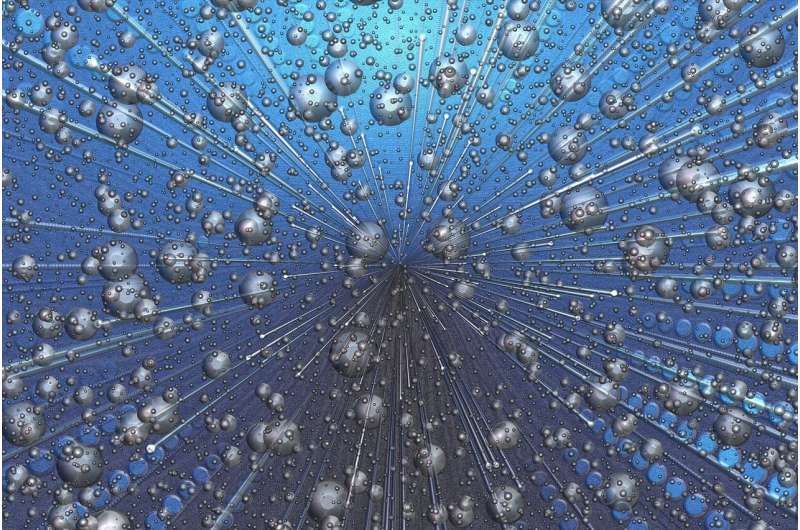Credit: CC0 Public Domain
ITMO University researchers have demonstrated that individual atoms can be transformed into polaritons—quantum particles that are a mixture of matter and light, which are transmitted via optical fibers. In this new state of matter, photons and atoms form ultra-strong coupling for the first time. The results of this research can be used to control the properties of light and matter and to create quantum memory. The paper is published in Physical Review Letters.
Materials' properties can be changed chemically, by mixing them with other substances, or physically, as when metals enter superconductive states during rapid cooling. ITMO University physicists have performed similar transformations in a relatively new way—by using light and subjecting matter to high-intensity light beams or creating conditions for ultra-strong coupling between atoms and photons, which results in new particles known as polaritons.
The most commonly employed way to provide conditions for ultra-strong coupling is by using optical resonators. These resonators let the light in but don't let the photons out easily. They are repeatedly reflected from the inner walls of the resonator, constantly interacting with the atoms inside. Thus, after being bombarded with photons, atoms form ultra-strong bonds with them, which facilitates the creation of quasiparticles.
"One of the limitations of this method is that polaritons can only form with the source of light constantly present. It means that when we turn off the light, all the newly acquired properties will return to their initial states. Additionally, more than one atom can fit inside a resonator, which negatively affects the result," explains Ivan Iorsh, a professor at ITMO's Faculty of Physics and Engineering.
As part of a project supported by the Russian Science Foundation, ITMO University researchers have, first of all, found a way to provide stronger communication between light and matter, and second, to subject a whole array of atoms to light. For instance, they demonstrated that using a waveguide (optical fiber) instead of a resonator is a more promising method of changing states of matter.
The main principle holds, but the atoms are subjected to the photons in the waveguide instead of those in the resonator. However, in this system the coupling is so strong that the desired effect can be achieved even without using external lighting. The ultra-strong coupling state demonstrated by ITMO physicists partially solves the problem of quantum memory—its instability.
"Quantum memory ensures high security of stored information, but it remains relatively fragile. When you attempt to read the data secured in this way, there is a possibility you will lose it. Polaritons are interesting because photons make them perfect for storing units of information called qubits, while atoms ensure they can bond with other quasiparticles and give us more opportunities to control them. Thus, by acquiring long-living quasiparticles, we can increase the resilience of the quantum system as a whole," says Ivan Iorsh.
More information: Ivan Iorsh et al. Waveguide Quantum Optomechanics: Parity-Time Phase Transitions in Ultrastrong Coupling Regime, Physical Review Letters (2020). DOI: 10.1103/PhysRevLett.125.183601
Journal information: Physical Review Letters
Provided by ITMO University
























